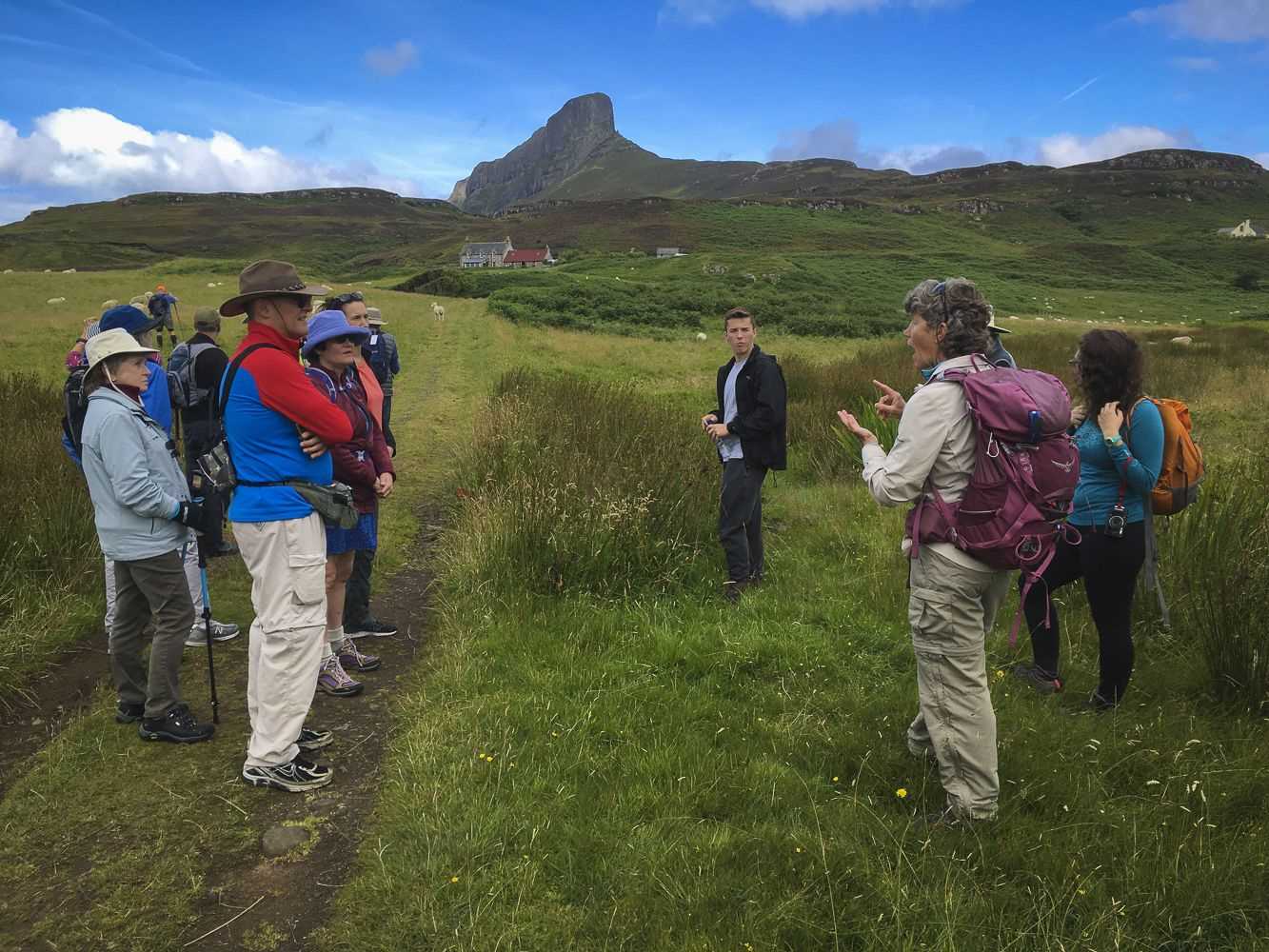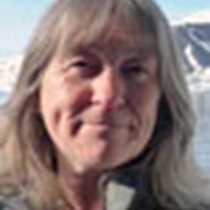Loch Nevis shimmered green and blue in the early morning sun as we slipped away from our berth at Inverie to make our way to the Isle of Eigg for our morning activities. Manx shearwaters and occasional puffins dotted on the water were spotted as we watched for wildlife. The transit gave the opportunity for Robin to give a talk called “Natural Scotland”, explaining in a poetic manner the interrelationship between the rocks, plants, trees, birds, wildlife and people of the country.
Soon we arrived at Eigg, one of the smaller isles of the Inner Hebrides. Today this tiny island has a population of approximately 100 people, although it once supported 500 people before the infamous clearances. Until 1997 it had been owned by a single absentee landlord, but when it came up for sale the residents got together to raise the money to buy it and it has now become a model of sustainable and green community development. Donna tied up the ship at the dock and, accompanied by her little dog Pibroch, piped us ashore with a fine set of bagpipe airs. Then it was off to explore the island on foot, enjoying the stunning landscape dominated by the looming pitchstone crag of An Sgùrr, the wild flowers, and meeting the locals and some hardy summer visitors.
Afterwards the Lord of the Glens set course for Tobermory on the Isle of Mull, passing Ardnamurchan Point, the westernmost tip of the British mainland, and its Stevenson lighthouse, a landmark for shipping since it was built in 1849. The famous waterfront, with its multicolored houses painted all the colors of the rainbow looked as jaunty as ever as we pulled in to the harbor. In 1588 a galleon of the Spanish Armada sought refuge here, but now lies lost and sunken somewhere in the bay. A leafy walk along the coast through Aros Park led us to a dramatic waterfall with wonderful views across the Sound of Mull and back towards Tobermory. There was also plenty of time to relax in the tranquil ambience of the seaside town.
The Hebridean Whale and Dolphin Trust has its headquarters in Tobermory, and one of its biologists, Ella Potts, came on board to tell us about the important work of the Trust in safeguarding the habitats of cetaceans in the Hebrides, and after dinner provided a heartfelt account of the pod of Killer Whales which reside in the area.







